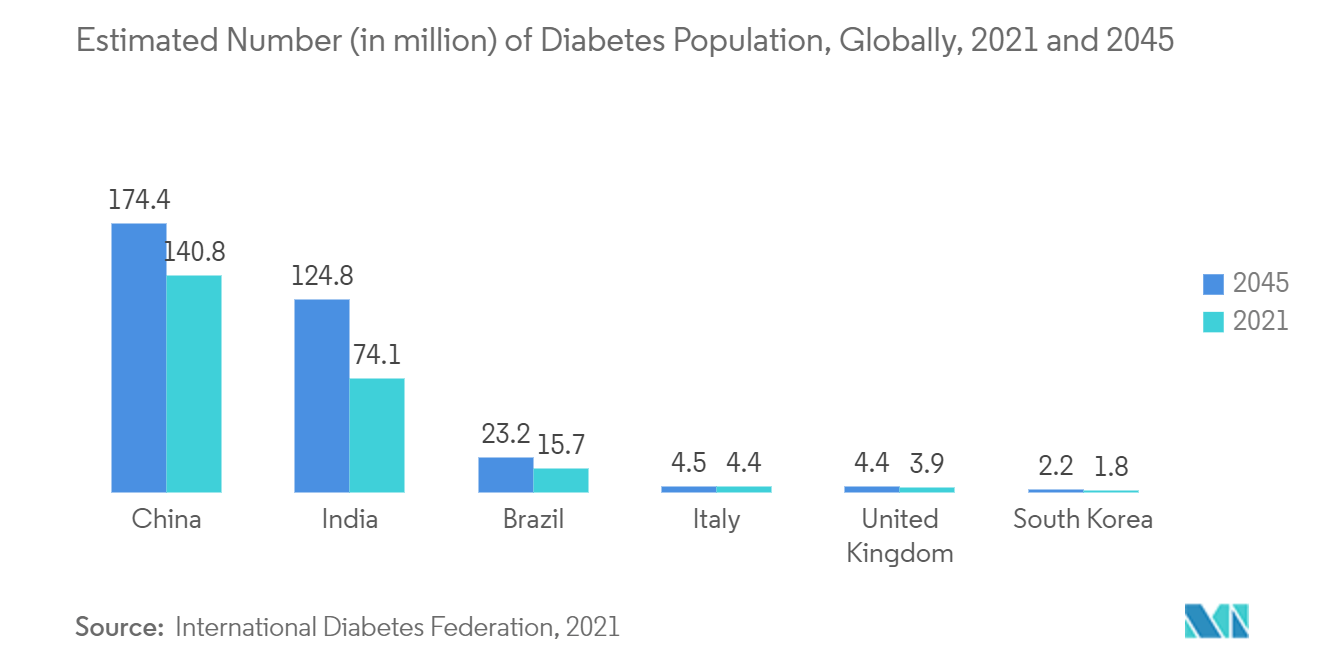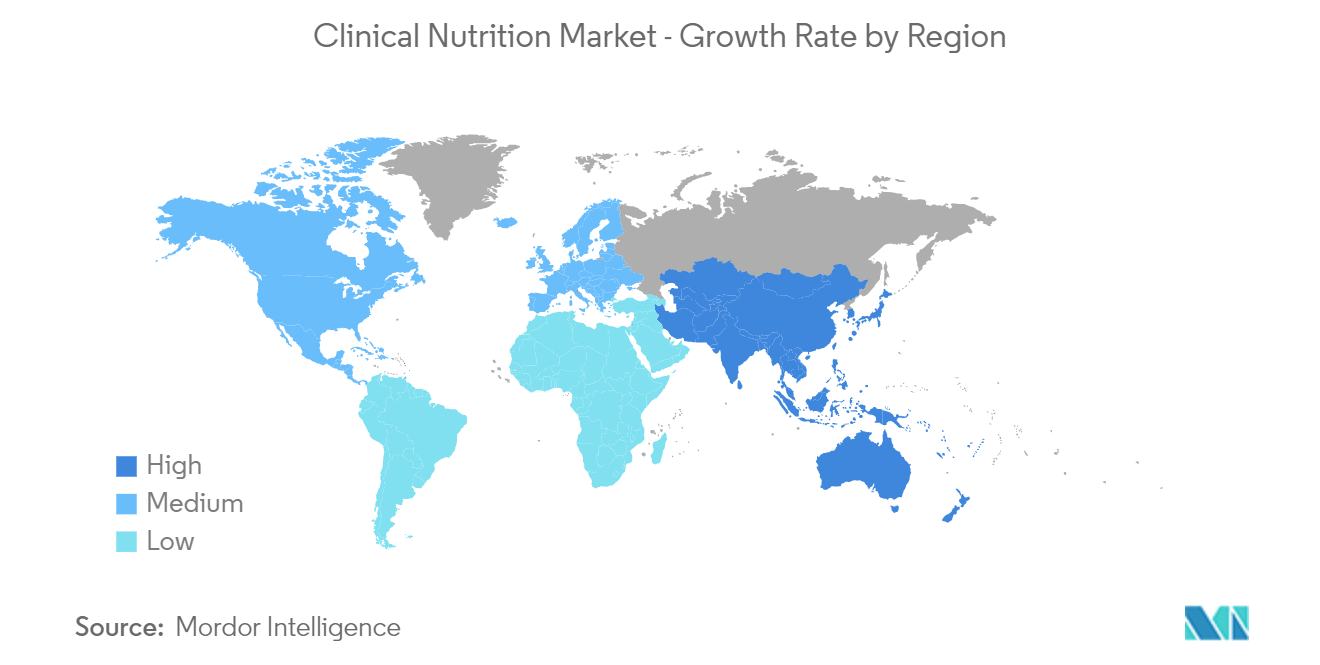Market Trends of Clinical Nutrition Industry
This section covers the major market trends shaping the Clinical Nutrition Market according to our research experts:
Oral and Enteral Segment is Expected to Hold a Significant Market Share Over the Forecast Period
Of the all routes of administration available for clinical nutrition, oral and enteral routes are used the most, followed by the parenteral route. This is mainly because of the additional cost of processing the product/nutrient involved in parenteral routes. Until other routes of administration are deemed necessary, physicians mostly prefer the oral route, as it involves fewer complexities and costs, when compared to the other two routes of administration. Enteral therapy includes specialized liquid feedings containing protein, carbohydrates, fats, vitamins, minerals, and other nutrients needed to live. These nutrition support products are formulated to meet individual needs for a variety of disease states and conditions. In addition to this, most of the disease conditions, for which the oral route is used for the administration of clinical nutrition, are chronic conditions and non-acute conditions. According to the paper published in the Journal of Nephrology in 2021, in the case of end-stage renal disease (ESRD), the patients only have two options: opting for a transplant (which may not always be possible, due to the unavailability of donors; even in cases where a donor is found, it could take anywhere between a few months to several years) or undergoing regular hemodialysis. Specialized clinical nutrition through oral and enteral feeding is prescribed for these patients to reduce the burden on their kidneys, so that the production of excretory products, such as creatinine, uric acid, and bilirubin, is in control. Initiatives by key market players are another factor in market growth. For instance, in April 2021, NutiFood partnered with BASF to produce Human Milk Oligosaccharides (HMO) products. NutiFood is the first Vietnamese dairy company to cooperate with a European corporation to bring HMO into its line of nutrition products. These products can be consumed through oral feeding.
Thus, the above-mentioned factors are expected to contribute to the growth of the segment over the forecast period.

North America Hold Significant Share in the Clinical Nutrition Market and is Expected to Follow the Same Trend over the Forecast Period
North America contributes heavily to the market growth compared to the other regions. The emergence of COVID-19 has led to shortages of clinical nutritional products in this region. As per the data provided by the American Society for Parenteral and Enteral Nutrition (ASPEN), as of January 2021, certain parenteral products, including multi-vitamin infusion (adult and pediatric), amino acids, potassium acetate injection, USP, sodium acetate injection, USP, and sodium chloride, 23.4% of injections are currently at a shortage.
To meet the evolving demands driven by new consumer buying behavior amid the COVID-19 pandemic, manufacturers have increased production and are working with retailers and government agencies to help ensure adequate availability of and continued access to oral clinical nutrition products. Some of the primary factors attributing to the growth of the clinical nutrition market include an increase in the prevalence of metabolic disorders. For instance, as per a press release by the government of Canada published in August 2021, diabetes is one of the major chronic diseases affecting Canadians where over 3 million Canadians, or 8.8% of the population were diagnosed with diabetes and 6.1% of Canadian adults were at high risk of developing diabetes as of August 2021. Such diseases require long-term clinical nutritional support thus, diseases such as diabetes are expected to increase market growth over the forecast period.
Hence, such instances indicate a rising demand for clinical nutrition products, thereby driving market growth.


